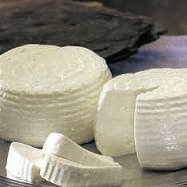Queso Fresco Info
Quesco Fresco Video
Essentially, the name Queso Fresco means "fresh cheese" south of the border.
This is one of Latin America's most popular cheeses, but is often found under different names in different regions.
This cheese has wonderful flavor, is easy to make and does not require againg.
Click here for a fun video, submitted by a customer, of this cheese being made.
The History of Queso Fresco
Traditionally, the cheeses of Latin America have primarily been fresh cheeses, made fresh from raw milk and consumed within a day or so. The high levels of salting, such as used in Mediterranean climates, have never been a technique of Latin America.
Today, however, some aged cheeses are found in Latin America, although these are of more recent times, due to the arrival of refrigeration and the ability to cool age the drier cheeses.
The great thing about these soft cheeses is that they require little equipment and they are easy to make choices for the small farms, or even in the home kitchen. Traditionally, they were simply drained in a cloth which was tied tight, with an added weight to press slightly.
Variations of Queso Fresco
There has always seemed to be a bit of confusion between Queso Blanco and Queso Fresco.
The term Queso Blanco, or White Cheese, can refer to a wide range of Latin American fresh cheeses, which can be coagulated with different methods:
- Acid addition such as lemon/lime juice or even vinegar and higher heating. This is referred to as Queso Blanco. In this cheese, the lactose remains unchanged and available to other unhealthy bacteria. Therefore, it is extremely important that the cheese be consumed within a short period of time, to keep bad bacteria from creating problems. This cheese will not melt when heated. It is often labeled as a "frying" cheese, or "queso para freir", because it can be sliced and heated without losing its shape.
- Acid developed from a bacteria culture addition plus rennet. This is the one known as Queso Fresco. The lactose in this cheese is converted to lactic acid and the cheese tends to be safer when held for a few days. The Queso Fresco will soften and melt when heated.
You can find our recipe for Queso Blanco Here.
Learn More About Queso Fresco
The flavor is rather mild, but that makes it special when used in cooking, because the cheese can easily acquire other flavors, such as spices, herbs, fruits, etc. The flavor of this cheese will also shine when using the best quality milk because there is no aging involved. It's all about the milk.
Crumbled, grated, sliced and melted, this cheese will provide salty and tangy flavor, as well as milk's wonderful ability to offset some of the heat from chiles and spices. You have probably experienced milk as the cure for that over-spiced bite we all run across.
This is a high-moisture cheese, delicious eaten fresh, and quick-n-easy to make (easy and no wait is great for the summer kitchen). It is perfect for experimentation because, once you have learned how to make this cheese, you can change it by simply adding herbs, spices, honey, or other flavorings.



































